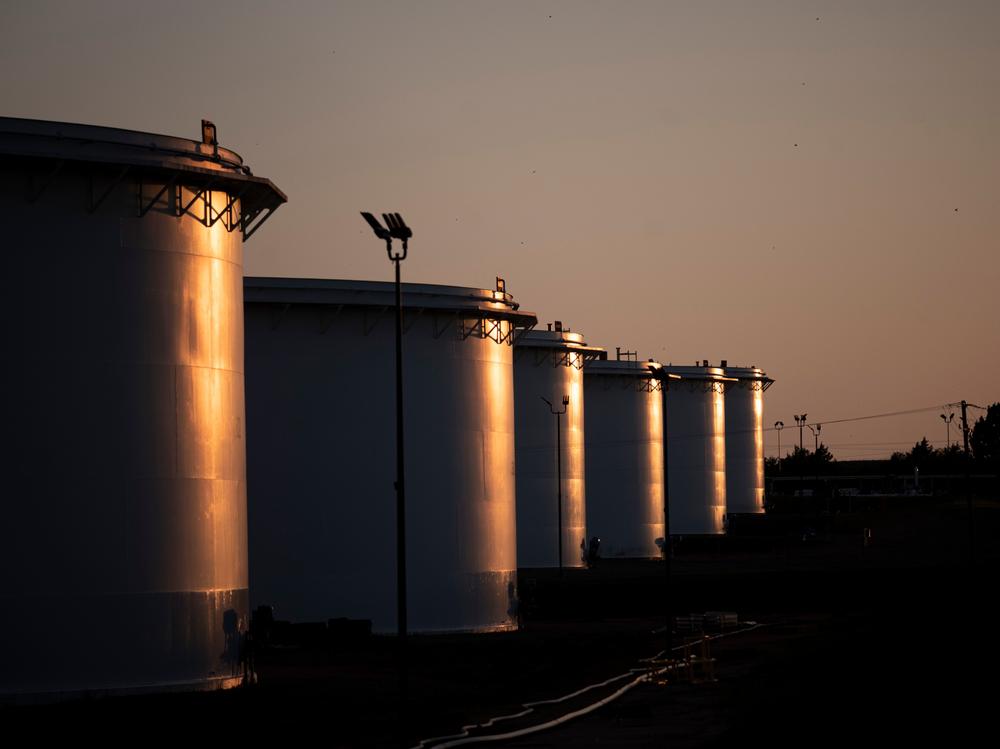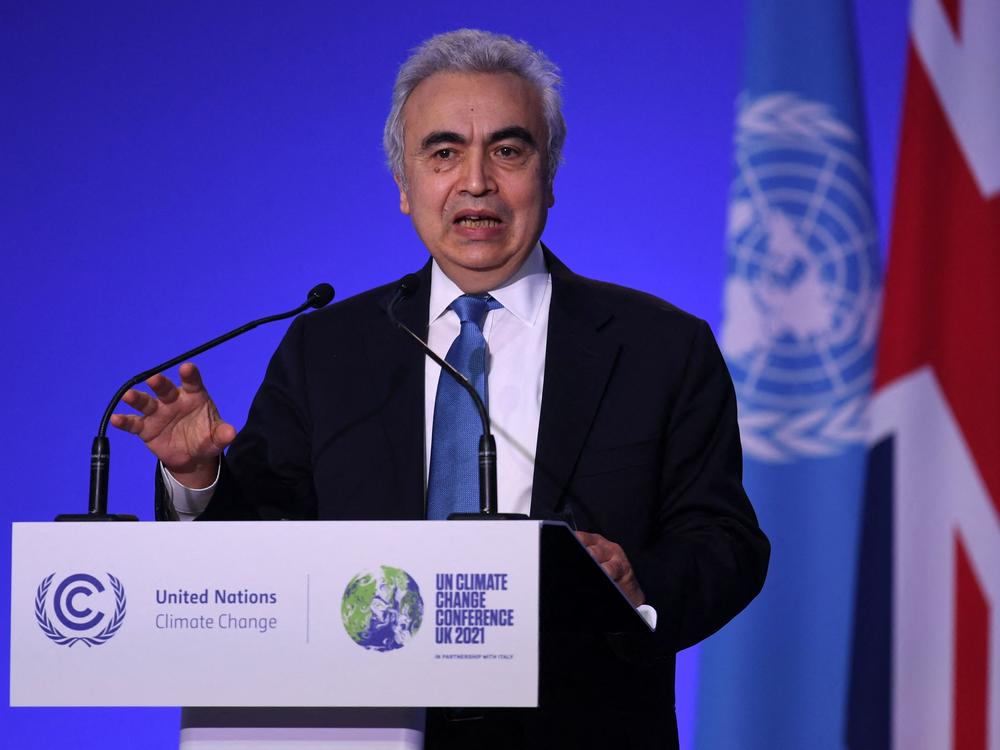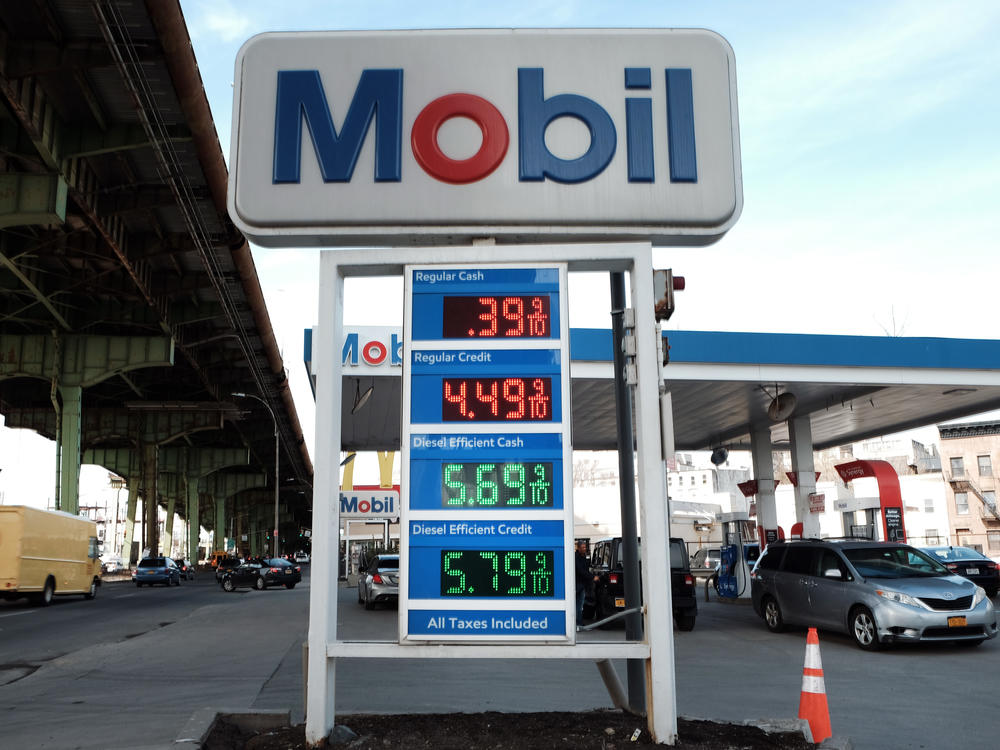Section Branding
Header Content
31 countries plan a big release of emergency oil to ease gasoline prices at the pump
Primary Content
The International Energy Agency's 31 member nations plan to release 120 million barrels from their emergency oil reserves, including 60 million barrels from a previously announced drawdown from U.S. stockpiles.
It's the second coordinated release of emergency oil from the IEA in just over a month, as gasoline prices have soared after Russia's invasion of Ukraine. The higher fuel costs have hurt consumers who are already dealing with high inflation around the world.
Around half of the latest IEA release will come from the United States as part of plans announced last week by President Biden to release 1 million barrels per day of oil from its Strategic Petroleum Reserve for six months, or a total of up to 180 million barrels.
Other IEA members include most of Europe, Japan and Mexico, among others.
"The @IEA is moving ahead with a collective oil stock release of 120 million barrels (including 60 million barrels contributed by the US as part of its overall draw from its Strategic Petroleum Reserve)," said Fatih Birol, IEA's Executive Director in a tweet.
Birol added that "more details of specific contributions will be made public soon."
The IEA announcement pushed down crude prices, with Brent futures, the global benchmark, down over 5%.
World faces loss of Russia oil exports
The IEA had announced on March 1 it would release 60 million barrels of oil, including 30 million barrels from the U.S. That move, however, was seen as too small to bring down crude prices.
Gas prices have declined, though, since the U.S. announced plans to release up to 180 million barrels from its emergency stockpiles. Still, they continue to remain above $4 a gallon and not from a record set last month unadjusted for inflation.
The IEA has estimated that Russia, one of the world's biggest oil exporters, could face cuts of about 3 million barrels per day in its oil exports, starting in April due to sanctions and also because some buyers are shunning its oil in the markets. Russia's oil exports totaled around 8 million barrels per day prior to the invasion.
"What we're seeing today with Russia is the potential for what could be the largest oil supply disruption ever," said Jim Burkhard, a vice president at S&P Global Commodity Insights.
More than half of Russian oil exports go to Europe, and 20 percent go to China, according the the IEA.
Oil markets are volatile
Global oil markets have been on a roller coaster since Russia's invasion of Ukraine in late February.
But analysts have warned the emergency oil releases from the U.S. and its partners would pose only a temporary solution, given the world is still likely to experience a supply gap from Russia.
"The only true long-term solution is either you increase supply or you decrease demand. Or more likely a combination of both," said Claudio Galimberti, senior vice president of analysis at Rystad Energy.
However, oil producers are limited in how much and how quickly they can ramp up production.
President Biden has recently been encouraging U.S. oil producers to drill more. But it would take several months before additional oil could come to market. And oil investors are hesitant to invest in further drilling after suffering big losses in previous oil busts.
The global oil cartel OPEC+ controls much of the world's oil supplies, as its countries sit on nearly 80% of proven crude oil reserves, and supply about 44% of the world's oil.
But last week OPEC+, which Russia is a member of, announced it would stick to its previous plan to increase oil production modestly, or about 400,000 barrels per day. That was much lower than the Biden administration had hoped for.
Biden wants to avoid a situation where gas prices become unbearably high.
Copyright 2022 NPR. To see more, visit https://www.npr.org.



